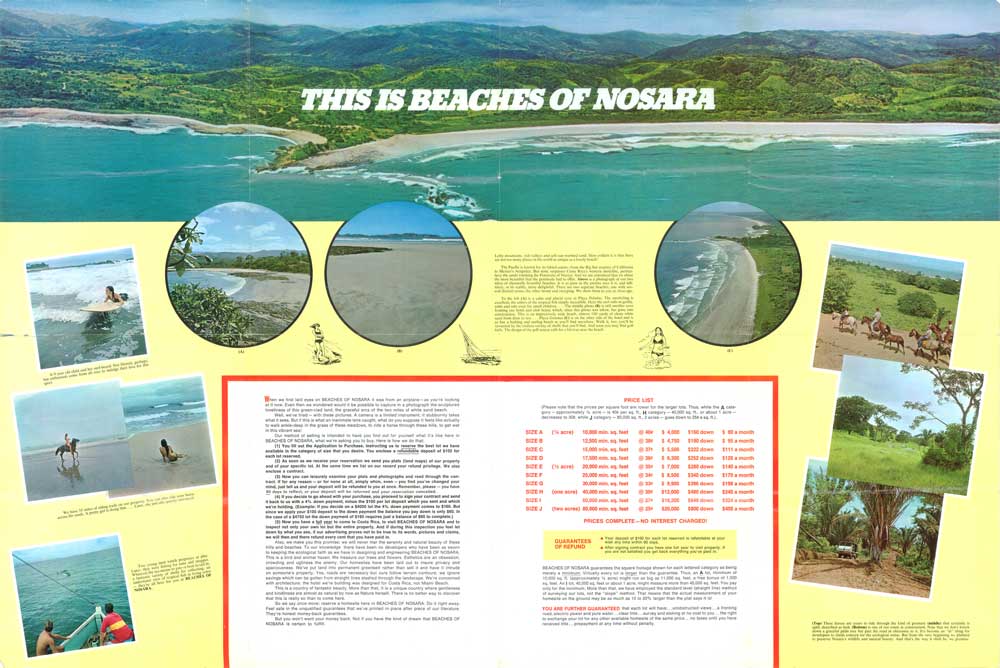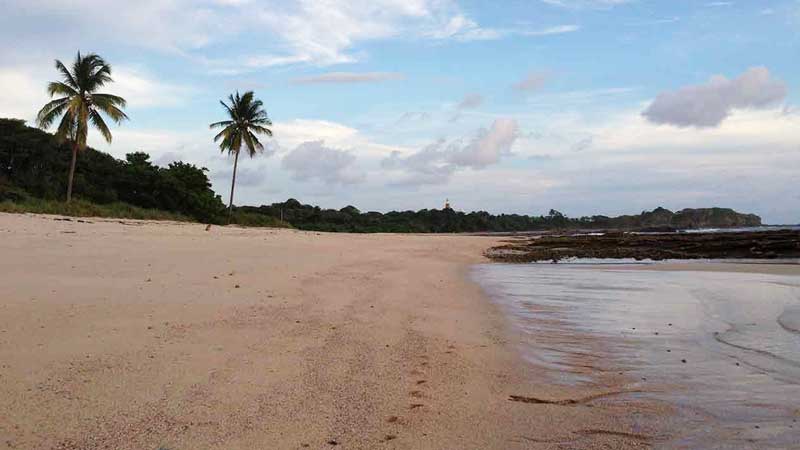The recently passed Law 9348 changes the status of the Ostional Wildlife Refuge, including the Beaches of Nosara, to permit mixed use of its land. As MINAE, the environment ministry, develops regulations that could alter the way our beaches are maintained and used, NCA looks at our role in shaping previous laws and regulations for the maritime zone — that area 200 meters inland from the high tide line. A search of our old newsletters took us back more than three decades to the first mention of development on or near the beach.
In the October 1981 NCA newsletter, NCA President Herman Birenbaum wrote, “Although it would be nice to say that this place is Utopia, it is not quite so.” NCA was concerned that the government would grant leases to commercial interests that would build structures inside the 200 meters, which could spoil the fragile habitat for wildlife on land and in the sea. In June, NCA had discovered that one lease, to a company planning to build cabins in the zone, was close to being granted.
With the help of a lawyer and cooperative government officials, NCA blocked that lease temporarily and then applied to lease the maritime zone itself, with the goal of keeping it free from development. The lawyer worked with the Forest Service to propose a national park, which would justify a guard with the authority to arrest “hunters, grave diggers, tree cutters, squatters, etc.” The government also hoped to establish a small school in the forest area for the study of local plants and animals.
Birenbaum asked members to contribute to a new Save Our Beaches fund to keep the Beaches of Nosara looking like the picture in the original advertisement: “Come breathe our pure air …. Swim in our unspoiled waters …”

In January 1982 Birenbaum reported that his request for contributions to Save the Beaches had elicited “a most gratifying financial response” and said NCA was working with Costa Ricans who agreed with its goals. Bocas de Nosara Association President Johnny Mayorga wrote, and over 500 local citizens signed, a strongly worded petition to a number of government ministers, supporting NCA’s efforts to preserve the beaches and “emphasizing the economic importance of our community to theirs,” Birenbaum wrote. Derk and Julia Van Wilpe, who owned property in Nosara, were organizing meetings with Costa Rican citizens to protest the opening of all Costa Rican beaches to commercial development.
In August 1982 the newsletter report that newly elected Diputado Guillermo Vargas, a conservationist concerned about the fate of the Pacific coastline, had led the Nicoya Municipal Assembly to official suspend the commercial lease that NCA had succeeded in blocking.
In 1983 the Assembly passed Law 6919 creating the Ostional Wildlife Refuge, which extended from Ostional to the mouth of the Rio Nosara. For the next several years, NCA leaders continued to work with government allies to expand the Refuge to include our beaches.
In 1985 NCA President David Kitson wrote that on Sept. 26 President Luis Alberto Monge published a decree, which has the force of law, extending the Refuge to include the area from the Nosara River to Punta Guiones.
“The intent of the decree is not to prevent human use of the beaches, but to regulate the use with wildlife protection as the predominant theme. We have been working quietly for some months to secure this decree,” Kitson wrote, adding that, “your Board is proud that such a major step has been achieved in the protection of the maritime zone.”
 Playa Pelada today
Playa Pelada today
